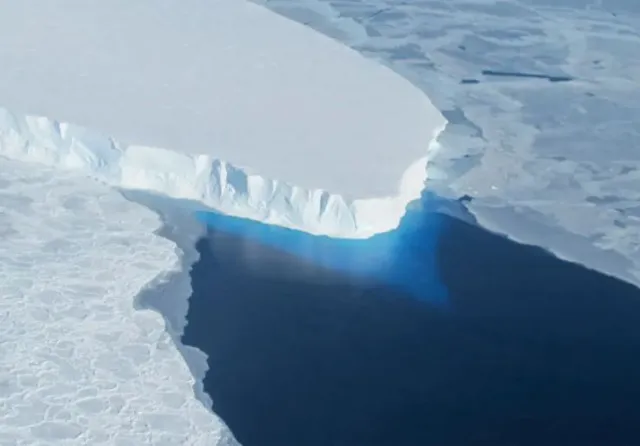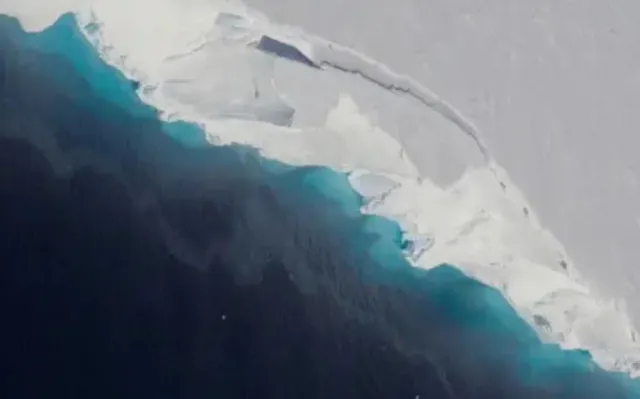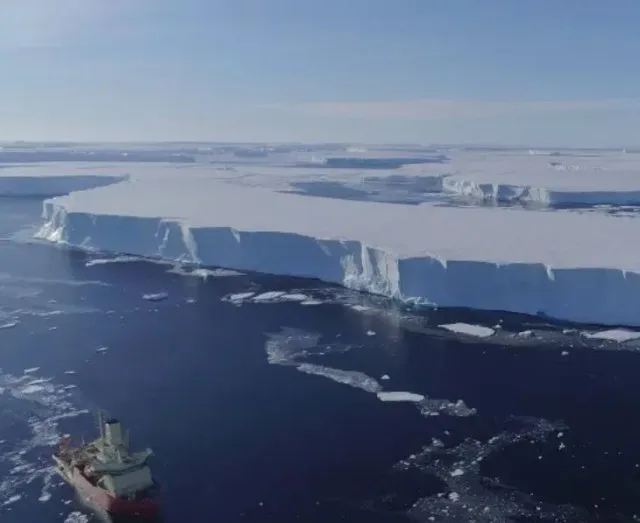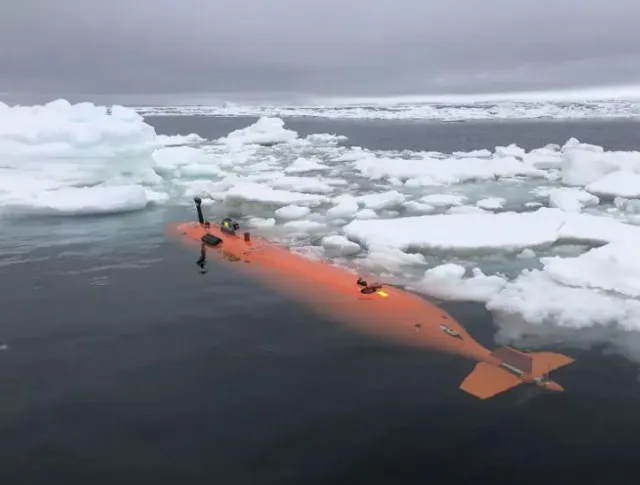Scientists report that the ‘doomsday glacier’ is barely hanging on, struggling for survival as it clings to existence by ‘its fingernails.’
Thwaites Glacier, often referred to as the “Doomsday Glacier,” is facing critical challenges.
This glacier has the potential to raise global sea levels by several feet. Recent studies indicate it is now hanging on “by its fingernails.”

Underwater erosion and climate change
A new study published in Nature Geoscience reveals alarming findings. Scientists have discovered that Thwaites Glacier’s underwater base is eroding due to rising global temperatures.
Robert Larter, a marine geophysicist and co-author of the study, emphasized the urgency of the situation.
“Thwaites is really holding on today by its fingernails,” Larter said.

He warns of significant changes happening over small timescales in the near future. Once the glacier retreats beyond a shallow ridge, it could lead to rapid destabilization.
Size and impact of Thwaites glacier
Thwaites Glacier is approximately the size of Florida. If it collapses into the ocean, it could dramatically increase sea levels.

NASA has projected that the Amundsen Sea region, which is only part of the West Antarctic Ice Sheet, could raise global sea levels by about 16 feet (5 meters).
Researchers have been monitoring the glacier’s recession since the mid-20th century. According to lead author Alastair Graham, the rate of disintegration has nearly doubled in the last decade.
Recent research efforts on Thwaites Glacier.

Earlier this year, an international team of scientists aimed to study Thwaites Glacier.
Their mission intended to find ways to mitigate the erosion. Unfortunately, their efforts were hindered by a large chunk of ice that broke off from the glacier.
Graham described the mission as “truly a once-in-a-lifetime opportunity.”
He expressed hope that the team could return to the glacier soon. Before the study was published, scientists believed the erosion was progressing at a slower pace.

Graham highlighted the precariousness of Thwaites Glacier. “Just a small kick to the Thwaites could lead to a big response,” he stated. This underscores the importance of ongoing research and monitoring.
The situation with Thwaites Glacier is critical. Its potential collapse poses significant risks to global sea levels. Scientists urge immediate action and further study to understand and mitigate these changes.
The future of the Doomsday Glacier hangs in the balance, emphasizing the need for continued vigilance.